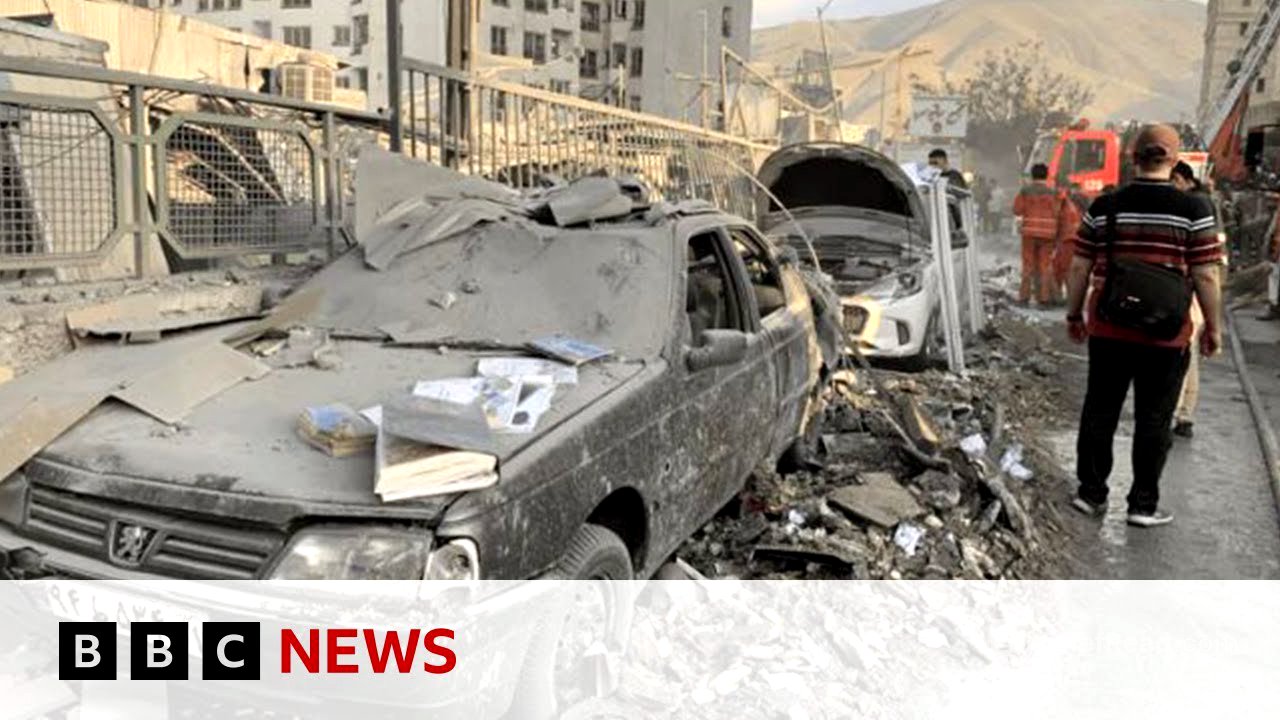TLDR;
This video provides an in-depth analysis of Israel's "Operation Rising Lion," a military strike targeting Iranian nuclear facilities and key military leaders. It examines the targets, the weaponry used, Iran's defence systems, and the potential implications of the attack.
- Israel launched Operation Rising Lion, targeting Iranian nuclear sites and military leaders.
- The operation involved over 200 IDF aircraft, including F-35 stealth fighters.
- Iran's nuclear facilities have been scrutinised, with concerns over uranium enrichment.
Operation Rising Lion: Israel Strikes Iran [0:31]
Following a barrage of rockets, Israel has launched air strikes on Iranian military targets, dubbed "Operation Rising Lion". The operation targeted Iran's nuclear sites and the capital, Tehran, resulting in reported casualties, including military leaders, nuclear scientists, and civilians. Prime Minister Netanyahu stated the operation aims to roll back the Iranian threat to Israel's survival.
Targets of the Israeli Defence Force (IDF) in Iran [1:46]
The IDF targeted a hybrid set of targets to diminish Iran's nuclear ambitions. Key targets included military bases near the Iraqi border, Tehran, and Natanz, the epicenter of Iran's main enrichment facility. High-value targets (HVTs) included Hussein Salami, the chief of the Islamic Revolutionary Guard Corps (IRGC), and the architect of Iran's Shahed drone program, both of whom were killed in the strikes. The Natanz nuclear facility sustained severe damage, as confirmed by satellite imagery and reports from the International Atomic Energy Agency (IAEA).
Impact on Iran's Military Capabilities [4:57]
The strikes will significantly hinder Iran's ballistic missile program, which relies on engines from North Korea and sodium perculate from China for solid fuel propellant. The damage inflicted on key facilities and the loss of critical personnel will impede Iran's ability to redevelop its ballistic missile program in the near future.
Details of the Attack [5:32]
Operation Rising Lion involved over 200 Israeli Defence Force (IDF) aircraft in five waves of strikes, including F-35 stealth fighters, F-15s, and F-16s, supplied by the US. The F-35's low radar cross-section (RCS) allows it to get closer to targets undetected, improving strike success. The F-15s and F-16s can carry cruise missiles for deep strikes, reducing risk to pilots and increasing the probability of success. These aircraft targeted Iran's surface-to-air missile systems using a combination of SEAD (suppression of enemy air defence) tactics and offensive strike capabilities.
Iran's Defence Systems [7:28]
Iran has a tiered, layered defence system, similar to Israel's Iron Dome, but not as capable. The major components include the Russian-supplied S300 anti-aircraft missile system (range of 200 km), the tactical hunter system (120 km), and the KOAD 15 (75 km). The IDF's main objective was to target and neutralise these systems using F-35s and SEAD tactics.
Flight Paths and Airspace [8:16]
Analysis of flight radar data suggests the IDF jets likely flew across Iraqi airspace into Iran, as Iranian airspace was rapidly shut down and cleared after the operation began. Civilian air traffic was deconlicted to reduce risk during the military activity.
Motivations and Planning Behind the Strike [10:05]
The strike was likely prompted by a combination of factors, including Iran's failure to comply with non-proliferation obligations and long-term contingency planning by both the US and the Netanyahu administration. Iran's extensive nuclear facilities, including Natanz, Fordow, Arak, and Bushehr, have been heavily scrutinised by IDF military intelligence.
Israel's and Iran's Nuclear Capabilities [12:07]
Israel neither confirms nor denies the existence of a nuclear arsenal, but it is widely believed to possess a nuclear capability. A nuclear weapon consists of enriched uranium (up to 90%), a warhead, and a delivery system such as a ballistic missile or aircraft.









